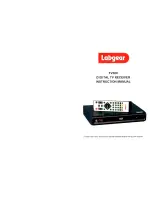
These whiskers can be seen with the naked eye if observed under a strong light source.
The usual symptoms of the presence of these whiskers is the Receiver goes deaf, or the V.C.O. becomes
intermittent or stops altogether.
A quick fix is described as "Percussive Maintenance", which consists of elevating the radio to a height of 18
inches above a hard surface covered in newspaper or other covering (we don't want to scratch the radio do we
?) and then letting Sir Isaac Newtons' invention do its thing.(drop it !).
This brutal but effective method should only be done to somebody else's radio preferably when the owner is out
of sight and hearing range.
The second method is to laboriously, and with a very big soldering iron, remove the offending module from the
circuit board, prise the side cover off with a fine bladed screwdriver and then use a small paint brush to
thoroughly clean out the inside of the module.
That’s the easy part.
Position the side cover back on the module, tack solder it at a number of points around the edge, using a
screwdriver to press the cover into place, then flow solder as neatly as possible to reinstate the shielding effect
of the cover.
Its impossible to not dramatically heat the module during this process but it doesn't seem to worry it, because the
"Circuit Board'" is ceramic.
If you are working on the V.C.O. module check while the cover is off, that the ceramic substrate has not broken
free from one or more of the mounting posts inside the module.
This fault is typified by the radio being extremely microphonic on both Rx and Tx.
If this is the case don't try to force the substrate back down, just apply lots of heat to the outside of the module
adjacent to the post in question and allow solder to flow into and fill the gap.
Allow the module to cool and then refit to the radio, not forgetting to solder both ends of the V.C.O. module to the
P.C.B. ground plane.
Although this procedure seems fairly drastic, the module was faulty anyway and attempting this repair is
definitely worthwhile, compared to parting with the hard-earned for a new module, if you can even source one
now.
Other problems that can occur include the flexible printed circuits that join the circuit boards at the front of the
radio becoming intermittent, especially in early model radios that used paper insulated flexible P.C's.
If they are in a bad way they can be replaced with ordinary ribbon cable, just keep the lengths about the same
and maybe apply hot-melt glue to the solder joints after it has been fitted in place, to provide some mechanical
support.
The volume and squelch controls have a printed carbon track and due to the cunning design of the adjustable
part of the control, the cup that keeps the dust out of the control will wear away the carbon and cause it to go
open circuit. GOOD ONE, Mr. P !!
I have had no luck finding an "off the shelf'" replacement that doesn't involve a bit of hacking and gouging to
make it fit, but a reasonable job can be done with a "gas axe" and only 2 Kilo's of body filler !!
If water has made its unwanted way into the control head on either the local or remote control versions, the
P.C.B. can be removed from the housing, successfully cleaned and repaired.
I use a cut down artists paint brush about 6mm wide to clean around the components with either metholated
spirits or preferably one of the low evaporation circuit board cleaners available from Woolietronics or other
suppliers.
The plastic housing is best just washed in soapy water and thoroughly dried.
A quick squirt of Mr Sheen restores that "just like a bought one" finish to your pride and joy. Be careful though,
not to scratch the red plastic lens that covers the 7 segment displays.
The push-button switches can be carefully prised apart and the contacts cleaned.
It helps to have obtained a rubber pencil" (made by Stadtler for correcting typing errors) from the stationers to
achieve this.
Most solvents/cleaners available will take the carbon film from the moving contact if applied, so use the pencil
and then brush the residue out with a small artists brush (the adjective refers to the brush not the artist.)
Philips FM92E Conversion to 6 Meters: Version 3.9 Page
67
Summary of Contents for FM92E
Page 19: ...Synthesiser Board Philips FM92E Conversion to 6 Meters Version 3 9 Page 19 ...
Page 26: ...Receiver Board Philips FM92E Conversion to 6 Meters Version 3 9 Page 26 ...
Page 50: ...FM91E PA Board above view Philips FM92E Conversion to 6 Meters Version 3 9 Page 50 ...
Page 52: ...Philips FM92E Conversion to 6 Meters Version 3 9 Page 52 ...
Page 54: ...Philips FM92E Conversion to 6 Meters Version 3 9 Page 54 ...
Page 55: ...Philips FM92E Conversion to 6 Meters Version 3 9 Page 55 ...
Page 79: ...40 6 Meter Antenna Philips FM92E Conversion to 6 Meters Version 3 9 Page 79 ...
Page 83: ...42 Philips FM91 Schematic Diagrams Philips FM92E Conversion to 6 Meters Version 3 9 Page 83 ...
















































